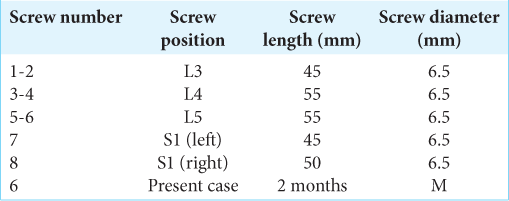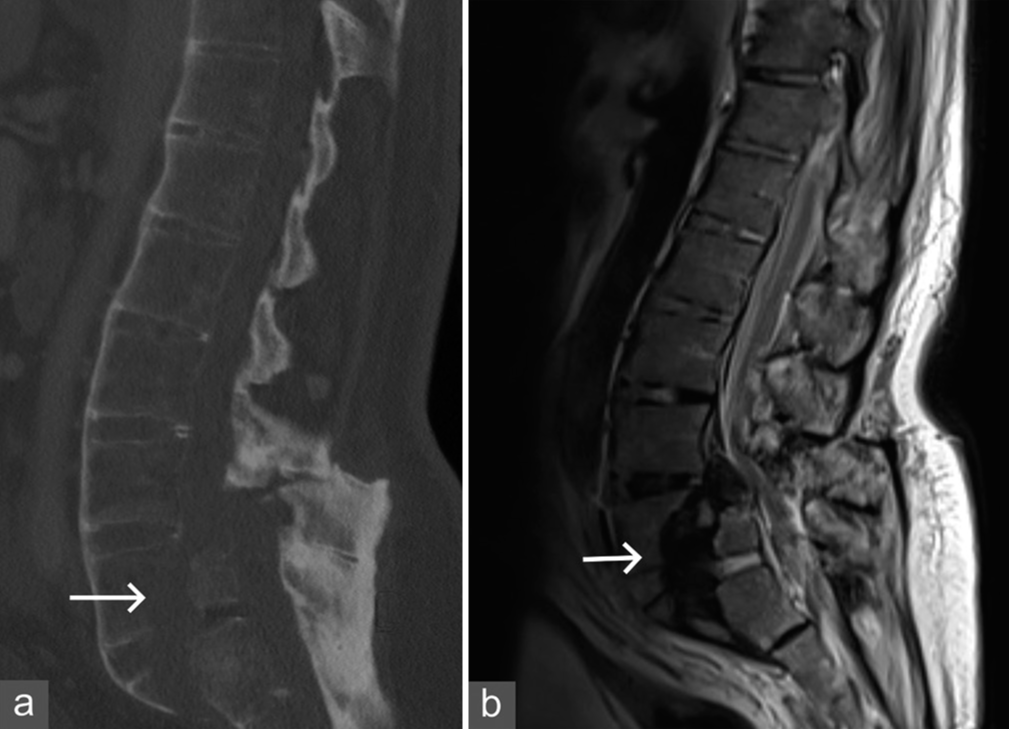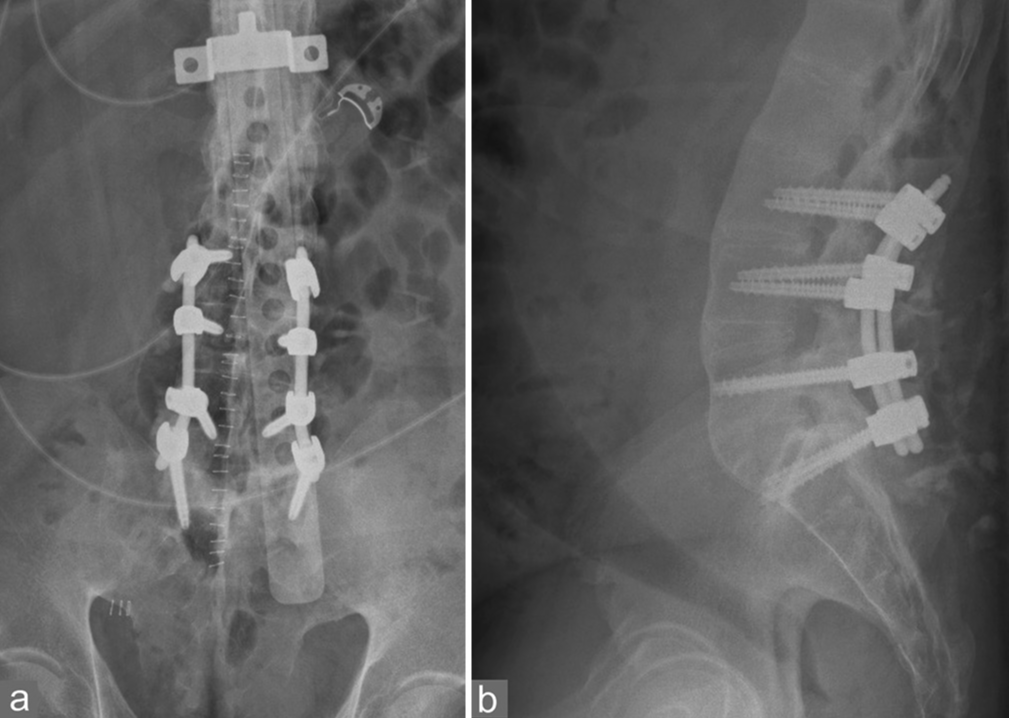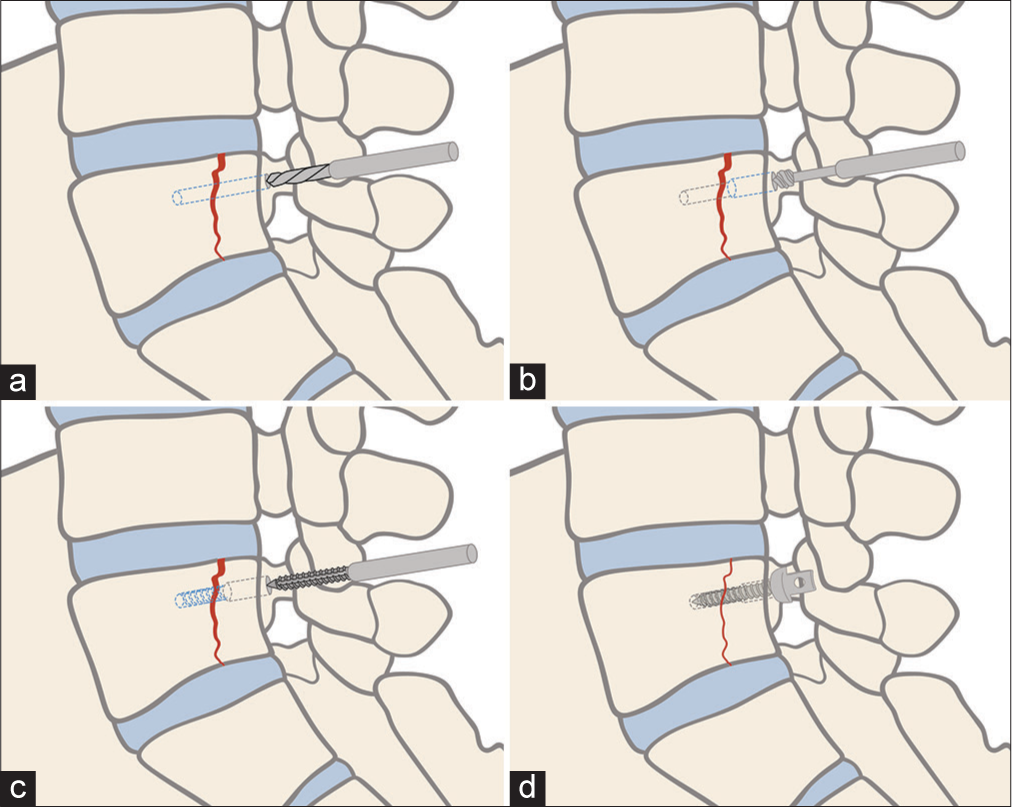- Department of Neurosurgery, Baylor College of Medicine, Temple, Texas, United States
- Department of Neurosurgery, Baylor Scott and White Health, Temple, Texas, United States
Correspondence Address:
Nicholas Scott Hernandez, Department of Neurosurgery, Baylor College of Medicine, Temple, Texas, United States.
DOI:10.25259/SNI_875_2024
Copyright: © 2024 Surgical Neurology International This is an open-access article distributed under the terms of the Creative Commons Attribution-Non Commercial-Share Alike 4.0 License, which allows others to remix, transform, and build upon the work non-commercially, as long as the author is credited and the new creations are licensed under the identical terms.How to cite this article: Nicholas Scott Hernandez1, Jose Miguel Soto2, David Garrett2. Use of a novel lag screw by technique approach for repair of a severe lumbar fracture associated with ankylosing spondylitis: A technical case report. 29-Nov-2024;15:445
How to cite this URL: Nicholas Scott Hernandez1, Jose Miguel Soto2, David Garrett2. Use of a novel lag screw by technique approach for repair of a severe lumbar fracture associated with ankylosing spondylitis: A technical case report. 29-Nov-2024;15:445. Available from: https://surgicalneurologyint.com/?post_type=surgicalint_articles&p=13253
Abstract
Background: The lag screw is a common technique and device used in orthopedic surgery for compressing simple fractures. Here, a lag screw was used to treat a traumatic L5-S1 fracture in a 53-year-old patient with ankylosing spondylitis (AS) resulting in 15 mm of anterior subluxation.
Case Description: A 53-year-old patient with AS resulting in 15 mm of anterior subluxation was successfully managed with a lag screw instrumented fusion.
Conclusion: A lag screw successfully stabilized a traumatic L5-S1 lumbar spinal fracture in a patient with AS.
Keywords: Ankylosing spondylitis, Distracted fracture, Lag screw, Lumbar spine fracture
INTRODUCTION
Patients with ankylosing spondylitis (AS) are more prone to spinal fractures.[
CASE DESCRIPTION
A 53-year-old male with AS and gastric sleeve was seen following a motor vehicle crash. The imaging studies demonstrated 15 mm of anterior subluxation in L5 vertebrae compared to S1 with ossification of the posterior ligamentous complex [
Figure 1:
(a and b) Preoperative sagittal slices of the lumbar spine with computed tomography and magnetic resonance imaging demonstrate 15 mm of anterior subluxation in L5 vertebrae compared to S1. White arrows in (a and b) refer to the fracture site. Additionally demonstrated ossification of the posterior ligamentous complex.
DISCUSSION
We present a novel surgical technique in which a lag screw was used to treat a lumbar fracture in a patient with AS, resulting in 15 mm of subluxation at the L5-S1 level. Lag screws and the lag screw technique compress the fracture fragments together.[
Figure 3:
Illustration depicting the lag-screw technique in a lumbar fracture. (a) The fracture is drilled through with the width of the inner diameter of the screw. (b) The near cortex is over drilled to the outer diameter of the screw to create the gliding hole (b). (c and d) Threads are then made, and the screw engages with the far cortex, compressing the fracture.
CONCLUSION
Here, a 53-year-old male with AS underwent successful repair of a severe lumbar fracture with instrumented fusion using a novel lag screw technique.
Ethical approval
The Institutional Review Board has waived the ethical approval for this study.
Declaration of patient consent
The authors certify that they have obtained all appropriate patient consent.
Financial support and sponsorship
Nil.
Conflicts of interest
There are no conflicts of interest.
Use of artificial intelligence (AI)-assisted technology for manuscript preparation
The authors confirm that there was no use of artificial intelligence (AI)-assisted technology for assisting in the writing or editing of the manuscript and no images were manipulated using AI.
Disclaimer
The views and opinions expressed in this article are those of the authors and do not necessarily reflect the official policy or position of the Journal or its management. The information contained in this article should not be considered to be medical advice; patients should consult their own physicians for advice as to their specific medical needs.
References
1. Einsiedel T, Schmelz A, Arand M, Wilke HJ, Gebhard F, Hartwig E. Injuries of the cervical spine in patients with ankylosing spondylitis: Experience at two trauma centers. J Neurosurg Spine. 2006. 5: 33-45
2. Minardi M, Narducci A, Vercelli GG, Carlino CF, Griva F, Pretti PF. Lag screws for reduction of bilateral lateral mass fractures due to spinal trauma. Brain Spine. 2022. 2: 100877









